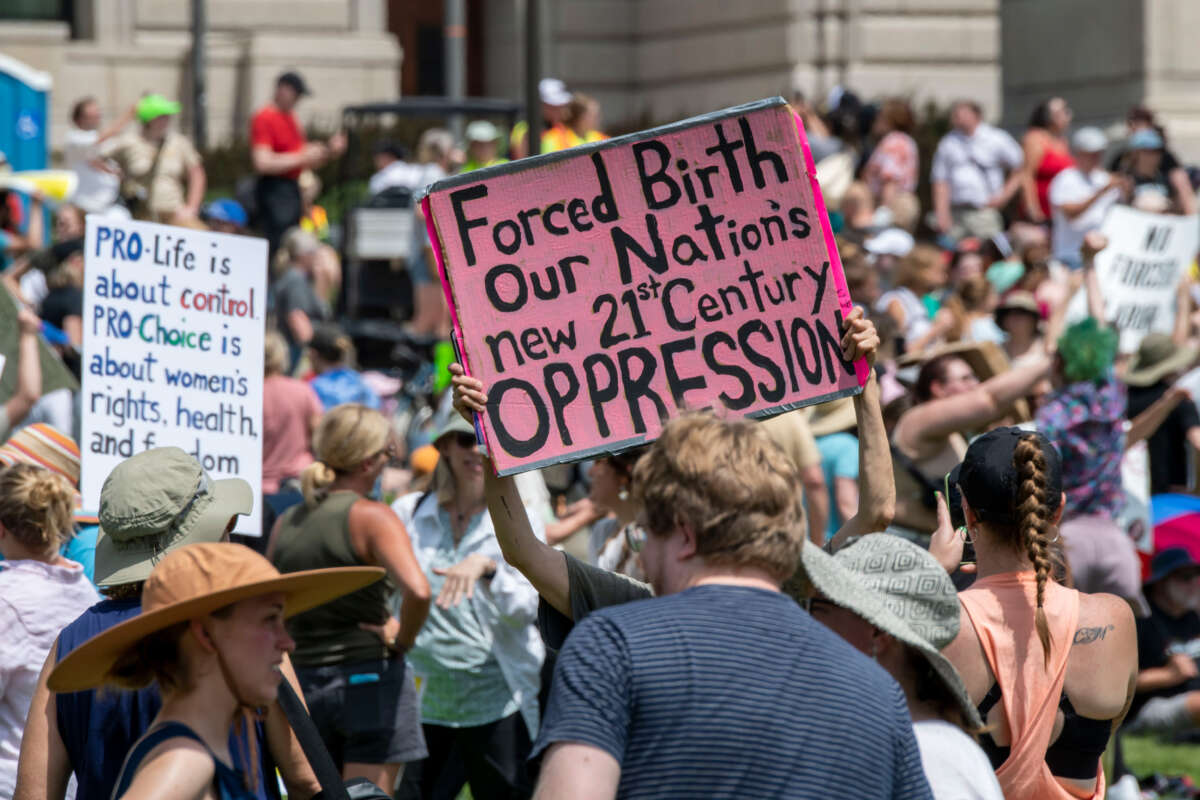New data shows that the number of legal abortions plummeted by the thousands in states that banned abortion after the Supreme Court struck down Roe v. Wade last year, demonstrating the vast chilling effect that bans have had on people’s ability to access the procedure.
According to data from #WeCount analyzed by FiveThirtyEight, states that had an abortion ban in place for at least one week between July 2022 and March 2023 saw an estimated total of 93,575 fewer abortions than the pre-Dobbs v. Jackson baseline. States like Texas, Georgia and Tennessee — all of which have among the strictest laws in the country, with near-total or total bans — saw the largest drop in legal abortions, the data shows.
Meanwhile, the number of legal abortions overall decreased by about 24,290, suggesting that the increase in abortions in states where abortion remained legal was not enough to offset the total losses. Although some states saw increases in abortion (especially those adjoining ones with bans on the procedure, like Florida, Illinois and North Carolina), the data suggests that there were still tens of thousands of people who were unable to travel elsewhere to obtain the procedure and instead were forced to remain pregnant.
“A significant number of people are trapped and can’t get out of places like Texas,” Middlebury College economics professor Caitlin Myers, who reviewed the data, told FiveThirtyEight. “And for the people who are traveling, we’re talking about enormous distances. Some people are likely getting delayed into the second trimester.”
It has always been difficult to measure the number of abortions performed in the U.S., even before Dobbs. Estimates from the Centers for Disease Control and Prevention (CDC) and the Guttmacher Institute for abortion rates in 2020 and 2019 vary between roughly 620,000 and 900,000 per year.
If the #WeCount data is correct, then, this is a significant drop in abortions over the course of just nine months.
Even some states where the procedure was legal for a significant portion of the study period saw a drop in abortions. Indiana, for instance, only had an abortion ban in place for a week before it was paused during ongoing legal battles. But the state — in which providers are experiencing staffing issues — still saw a 1,660 drop in the number of abortions, the data shows.
Currently there are 20 states with some form of an abortion ban and 15 states with full or near-total bans, with several states whose bans are in litigation. Abortions are banned across nearly the entirety of the South, meaning that many people in the South would have to travel great distances, potentially thousands of miles, just to get to a state where they can safely obtain the procedure without fear of retaliation.
In states that didn’t implement a ban, there were 69,285 more abortions, the data shows, suggesting that there may be tens of thousands of people who were forced to travel to another state for the procedure.
Similar studies have also found a drop in the number of abortions. In April, #WeCount found that, between June and December of last year, there were a total of 32,360 fewer abortions than the pre-Dobbs baseline. In the 13 states where an abortion ban was active for most of the six-month study period, there was a cumulative decrease of 43,410 abortions, the study found.
Press freedom is under attack
As Trump cracks down on political speech, independent media is increasingly necessary.
Truthout produces reporting you won’t see in the mainstream: journalism from the frontlines of global conflict, interviews with grassroots movement leaders, high-quality legal analysis and more.
Our work is possible thanks to reader support. Help Truthout catalyze change and social justice — make a tax-deductible monthly or one-time donation today.
